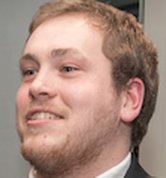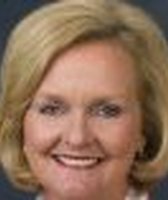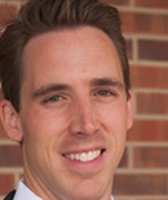Get PolitiFact in your inbox.
Political commentators often point to the fall 2015 protests at MU as the beginning of a national trend of emboldened student activists making noise at institutions of higher education.
In the case of writer David French and The National Review, MU is a cautionary tale about what happens when student activists are too loud — enrollment, finances and tradition suffer.
In his Oct. 25 National Review essay, French contends the 2015 MU protesters were overreacting to what was happening around them or were reacting for reasons separate from racial justice.
"It’s worth pondering the lessons of arguably the most consequential campus protests since the Vietnam era," he wrote. "A flagship public university of a red state capitulated to unreasonable, far-left demands, and it paid a terrible price."
French made one claim that caught our eye: "Before and after the protests, (the university) bent over backwards to increase student and faculty diversity."
We reached out to French and MU spokesperson Liz McCune and scoured the public record to see what MU has done and is doing regarding faculty diversity.
It’s difficult to nail down what exactly "bent over backwards" means, so we decided not to put the statement on the Truth-O-Meter. But there is pertinent information to contextualize French's statement.
Faculty diversity at MU
In the fall of 2015, activist group Concerned Student 1950 called for increasing the percentage of black faculty and staff at MU to 10 percent by academic year 2017-18. The city of Columbia is about 10 percent black; the University of Missouri student body is about 7 percent black.
And while MU has indeed taken measures to increase faculty diversity, faculty diversity has hardly increased. In 2015, black faculty was slightly less than 3 percent. The most recent data (2017) shows that 3.3 percent of MU’s faculty is black — 65 faculty members out of 1,969. Additionally, 44 percent of non-black faculty have tenure, while 22 percent of black faculty have tenure.
In a November 2015 op-ed for the Huffington Post, nine MU faculty members, who identified themselves as "a group of faculty of color who were previously employed as tenured or tenure-track faculty at the University of Missouri, Columbia (MU) and have since left the institution," highlighted 10 problems faculty of color face at MU.
The letter charges MU with having done little to help current faculty of color and increase faculty diversity leading up to the protests of that fall.
Among the issues the nine professors emphasized included the struggle for a diversity course requirement, racism among peers in the city and at the school, scarce opportunities for advancement, the alienation of "being the only, or one of a few, faculty of color in a department" and retainment.
We checked news articles from the time to get more of the lay of the land. A 2015 St. Louis Post-Dispatch article speaks to what MU did before the 2015 protests, accounting for several instances when MU started and stopped in attempts to confront issues of race on campus. In 2002, the article said, "A recommendation that undergraduates would be required to take a diversity course was ‘turned down flat’ … " The article goes on to detail the Faculty Council Committee on Race Relations that started in May 2015, another initiative meant to name problems on race and find solutions.
This year, the American Council on Education’s Center for Policy Research and Strategy published a study reviewing MU’s performance when handling the 2015 protests in particular and race on campus in general. The study acknowledges MU’s "long history of … declining to address racial incidents on campus."
For faculty diversity, the study states, "The university, like other institutions across our nation, has struggled with the hiring (e.g., obtaining a diverse candidate pool as well as getting search committees to hire candidates in the pool) and retaining of new faculty and staff of color."
Addressing the problem
French wrote in a Twitter direct message that the 2006 Chancellor’s Diversity Initiative was an indication of MU handling this issue of faculty diversity. He also mentioned MU’s hiring of a chief diversity officer, a position the university created in response to the 2015 protests and filled in 2016 with Kevin McDonald.
French brought up a 2010 MU News Bureau (the university’s publishing arm) story that announced the hiring of 15 underrepresented minority faculty. French also focused on the School of Education’s various diversity initiatives; one of the goals is increasing diversity among faculty. Finally, French sent a link to MU’s office of Inclusion, Diversity & Equity's webpage.The Division of Inclusion, Diversity & Equity writes that they measure their progress by regularly studying campus climate.
Other efforts that French didn’t touch upon are MU’s allocation of $600,000 for recruitment and retainment of underrepresented faculty and $1 million for recruitment of minority postdoctoral fellows. This occurred after the 2015 protests.
MU spokeswoman Liz McCune wrote in an email that "in the early 2000s, the university set aside funds meant to incentivize departments to hire diverse candidates."
"From 2005 to 2015, non-white faculty increased 51 percent, from 352 in 2005 to 535 in 2015," she continued. "During the same time, white faculty only increased 10 percent, from 1,337 to 1,476."
McCune went on to mention the Eminent Scholars Program at MU meant to "help faculty of color and women connect with national mentors in their field of study." This was created after the protests.
The big picture
In commenting on the aftermath of the 2015 protests at MU, David French wrote: "Before and after the protests, (the university) bent over backwards to increase student and faculty diversity."
MU has tried to tackle faculty diversity in the past, and McCune raised a number of examples. But many of MU’s initiatives relating to faculty diversity haven’t moved the needle: Statistics and personal stories show faculty diversity to still be an issue.
Our Sources
David French, Nov. 26 Twitter direct message exchange
National Review, "Mizzou after the Meltdown," Oct. 25, 2018.
Columbia Missourian, "MU made sweeping changes at the top after the fall 2015 protests. But it falls short on hiring minority faculty," Nov. 9, 2018.
American Council on Education Center for Policy Research and Strategy, "Speaking Truth and Acting with Integrity: Confronting Challenges of Campus Racial Climate," 2018.
Inside Higher Ed, "Missouri 3 Years Later: Lessons Learned, Protests Still Resonate," Sept. 12, 2018.
St. Louis Post-Dispatch, "Mizzou has a history of stalled race initiatives," Nov. 15, 2015.
University of Missouri Inclusion, Diversity & Equity
Columbia Missourian, "UM System hires Kevin McDonald as first chief diversity, equity and inclusion officer," Mar. 23, 2016.
Huffington Post, "Mizzou Names First Person To Take Chief Diversity Officer Job," Nov. 10, 2015.
United States Census Bureau, "Quick Facts, Columbia city, Missouri," 2017.
University of Missouri Student Body Profile, Fall 2017
Huffington Post, "As People of Color Formerly Employed by Mizzou, We Demand Change," Nov. 17, 2015.
Kansas City Star, "University of Missouri campus in Columbia hires black faculty at a slow pace," June 4, 2016.
The Maneater, "Race Relations Committee presents report outlining creation of new committees across UM system," Sept. 16, 2016.
MU News Bureau, "MU hires record-breaking number new faculty from underrepresented groups," Sept. 9, 2010.
Columbia Missourian, "MU committees look to long term in race relations, diversity requirements," Dec. 8, 2015.
University of Missouri System Diversity, Equity and Inclusion Audit
KBIA, "Exam - A Year In Review: Diversity and Inclusion at the University of Missouri," Sept. 23, 2016.
University of Missouri Faculty Institute for Inclusive Teaching
College of Education Diversity Initiatives
Institutional Research & Quality Improvement, "Employee Data," up to 2017.
Bustle, "What Is Concerned Student 1950? The University Of Missouri Peaceful Protests Were Led By A Standout Organization," Nov. 9, 2015.
































